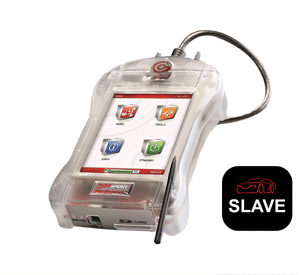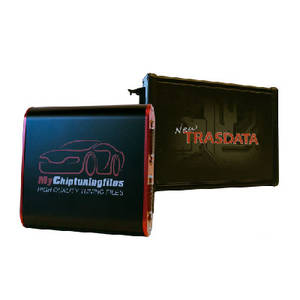Monday 17 November

So, if you’re even a little bit into cars, you’ve probably heard about chiptuning or ECU tuning. You know, the stuff people do to make their car go faster or sometimes even save a bit on fuel? Well, it’s a whole world of technology that’s evolved a ton over the years. It’s pretty wild to think about where chiptuning started and where it is today. From simple, rough tweaks to insanely precise fine-tuning options we have now, it’s definitely a journey worth diving into.
Let’s walk through how this all came to be, from those first chip swaps to the advanced techy stuff we have today. Buckle up!
What Is Chiptuning, Anyway?
Alright, let’s break it down a bit before we get further into it. Chiptuning, in a nutshell, is when you modify a car’s ECU, which is the “Engine Control Unit.” Think of the ECU like the brain of your car. It controls the engine’s timing, fuel injection, ignition, and a whole bunch of other things that make your car run just right. Most manufacturers set these ECUs to balance between performance, fuel efficiency, and engine longevity, which, yeah, kinda makes sense. But it also means they leave a little extra potential on the table.
So, what does chiptuning do? Basically, it lets you tap into that potential by adjusting some of these settings to, say, get more horsepower or make the engine more fuel-efficient. But trust me, back in the day, it wasn’t as easy as plugging in a laptop and making adjustments. Way, way harder.
Early Days of Chiptuning: The Chip Swap Era
The term “chiptuning” literally came from the fact that tuners were physically swapping chips out of the ECU to make changes. Yup, back in the 1980s and early '90s, when cars started getting a bit more digital, tuning meant actually opening up the ECU and pulling out the chip. Sounds pretty crazy by today’s standards, right?
Back then, you could buy pre-programmed chips designed for specific engines or car models. And that was it. There was no “custom tune” where you could adjust individual settings. So, it was sort of like buying an “almost” one-size-fits-all tune and hoping it worked well with your car. These swapped-out chips would adjust things like fuel injection rates or ignition timing, giving you a slight power boost, if you were lucky.
Of course, these chips weren’t tailored to each individual car. So tuning was a bit of a shot in the dark. The chips couldn't even be reprogrammed once they were installed. For the car enthusiasts back then, though, it was the way to unlock performance that was otherwise hidden away. It wasn’t perfect, but it opened up a whole new world of possibility for gearheads everywhere.
Also Read: Tuning Regulations: What You Should Know Before Modifying Your Car
The Rise of OBD and Flash Tuning
Now, let’s jump forward to the 1990s. This is when cars started getting smarter, and the automotive industry introduced standardized diagnostic ports, also known as OBD ports (On-Board Diagnostics). By 1996, OBD-II was the standard in most vehicles. And this tiny port under your dashboard completely changed the tuning game. Through the OBD port, mechanics could now access tons of data on your car’s performance, and tuners realized they could use it to connect to the ECU without pulling it apart or swapping any chips.
This is where “flash tuning” comes in. Instead of swapping out a whole chip, tuners could now overwrite the ECU’s original software with a new one. Flash tuning was way safer and less invasive. Plus, tuners could make much more precise changes since they were directly accessing the ECU’s software. Now, you could adjust specific settings, like fuel maps and ignition timing, based on each car's unique setup, instead of hoping the chip you got would somehow work with your engine.
One of the best things about flash tuning was the option to return to the car’s stock settings if the new tune didn’t work out. This ability to “reflash” the ECU was a game-changer for enthusiasts who wanted to test different setups without serious risks. The entire tuning industry started to expand from here, and suddenly shops were popping up that specialized in ECU remaps and all kinds of car modifications.
Enter the Era of Customization and Fine-Tuning
So by the early 2000s, tuning had become way more refined, and now tuning shops were offering custom remaps for all kinds of driving preferences. Want better fuel economy? Done. Want a super-responsive throttle? They could do that too. It was an era where tuning wasn’t just about pushing raw horsepower but tailoring the driving experience to exactly what the driver wanted.
With automotive software getting more advanced, tuning tools followed. Real-time data analysis became possible, so tuners could fine-tune details like turbo boost levels, throttle sensitivity, and gear shifts. Turbocharged engines, in particular, became really popular in this period, since they responded extremely well to tuning. The ECU controls the boost pressure, so adjusting that could make a big difference in performance.
Dyno tuning also took off. A dynamometer (or dyno) lets tuners test a car in a controlled environment, measuring things like power and torque. Instead of broad, guess-based tuning, it became possible to get real, data-driven adjustments. Tuners could see exactly how each tweak affected performance and adjust accordingly. At this point, tuning was no longer just a series of simple adjustments—it was a whole science.
Stages of Tuning: Tailoring Performance to Your Needs
As tuning got more advanced, shops began offering different “stages” of tuning to fit different needs and setups. For example, a “Stage 1” tune would be pretty mild and typically work with the car’s stock parts. A “Stage 2” tune, though, might require hardware upgrades like a larger intercooler or a better exhaust system. Each stage offered more power or responsiveness but also came with its own set of requirements and potential trade-offs. It was all about finding that sweet spot.
Also Read: Turbocharging vs. Supercharging: Which Tuning Method is Best for Your Car?
Factory-Tuned Options and the Manufacturer Response
With tuning getting so popular, even car manufacturers started taking notice. Brands like BMW M, Audi Sport, and Mercedes-AMG began offering performance models with ECUs that were already tuned for high performance. In a way, this was a nod to the tuning community, giving drivers a factory-approved option to unlock more power without going to a tuning shop.
That said, aftermarket tuning was still thriving. Factory performance upgrades often played it safe, leaving room for tuners to push things even further. Diesel tuning also became a huge thing, especially in Europe, where people started tuning diesel engines for both performance and economy-focused options.
High-Tech Tuning: Precision and Data Logging
Fast forward to today, and tuning is about as high-tech as it gets. Tuners have access to an overwhelming amount of data on modern cars, which lets them make extremely fine-tuned adjustments. They can monitor things like air-fuel ratios, exhaust gas temperatures, and even knock levels in real-time. This lets them make adjustments with pinpoint accuracy.
Modern tuning software even allows for custom maps that can be switched on-the-fly. Some tuners now offer dual-mapping setups, where drivers can switch between performance and economy modes with just a button. And cloud-based tuning is on the rise too, meaning you can get a custom tune uploaded to your car remotely. Imagine tuning your car without even going to the shop—just a few taps and it’s done.
Some tuners are also starting to use AI and machine learning to predict the best tuning setups based on tons of data points. This tech is still pretty new, but it could make tuning even more accessible and precise in the future.
The DIY Revolution: Making Tuning Accessible
With tuning tech getting more advanced, it’s also gotten way more accessible. What used to require a specialized shop is now something you can almost do at home. There’s tons of online guides, easy-to-use software, and active tuning communities ready to help you get started. Some companies even sell plug-and-play tuning kits so you don’t need to be a mechanic to try it out. Sure, there’s some risk, like messing with the engine or voiding the warranty, but for a lot of people, the potential performance gains are worth it.
Also Read: Alientech KESS3: Pricing, Compatibility, and Master vs. Slave Comparison
Legal and Ethical Issues in Chiptuning
Of course, tuning isn’t without its challenges. In many places, there are strict regulations on emissions, and some aggressive tunes can push cars past the legal limits for street use. Some tuners have started offering “green” tunes to balance performance with lower emissions, but it’s still a bit of a gray area.
And then you have manufacturers, like Tesla, who make tuning almost impossible by restricting ECU access. This has sparked debates around driver rights versus the need for emissions control and safety. It’s a tough balance, and it’s probably only going to get more complicated.
So, What’s Next?
As cars get even more advanced, chiptuning will continue to evolve. With electric vehicles (EVs) on the rise, tuners are starting to explore ways to tweak power delivery, throttle response, and maybe even battery performance. The future of tuning with EVs is a whole new frontier since there’s no traditional engine to work with.
AI and machine learning will probably play a bigger role too. Imagine a system that learns your driving habits and adjusts the car’s settings automatically—without needing a tuning shop. That’s the direction things seem to be heading.
Accelerate Your Auto Business with MyChiptuningfiles
Ready to take your auto shop to the next level? MyChiptuningfiles is the go-to partner for boosting vehicle performance! Our premium engine tuning solutions increase power, torque, and fuel efficiency, whether you’re running a cozy garage or a large dealership. With user-friendly tools like WinOLS, upgrading your customers' cars is a breeze.
But that’s not all—we also offer specialized solutions for DPFs, EGR valves, and AdBlue systems to fix common engine issues like clogged filters and emission problems. Trusted by 53,000+ partners globally, MyChiptuningfiles helps you keep customers satisfied and coming back!
Wrapping Up
Chiptuning has come a long way, from swapping out physical chips to insanely high-tech ECU remaps. These days, it’s not just about power; it’s about precision, personalization, and finding the right balance between performance and efficiency. What started as a niche hobby is now a massive industry, and the rise of EVs, machine learning, and remote tuning means the future of chiptuning is looking brighter than ever.
For car enthusiasts, chiptuning isn’t just a technology; it’s a way to connect with your car and make it truly yours. Whether you’re looking for more horsepower, better fuel economy, or just a snappier throttle, chiptuning is here to stay.
Chiptuning tools
Whether you own a car, truck or tractor: we have the best equipment and software for tuning your petrol and diesel engine. With our chiptuning tools it is possible to easily read out the original engine software of your vehicle and upload it to our website. And then it's up to us to provide you with high-quality and customized chip tuning files. Curious about our range of chiptuning tools? Check it out via the button below!









